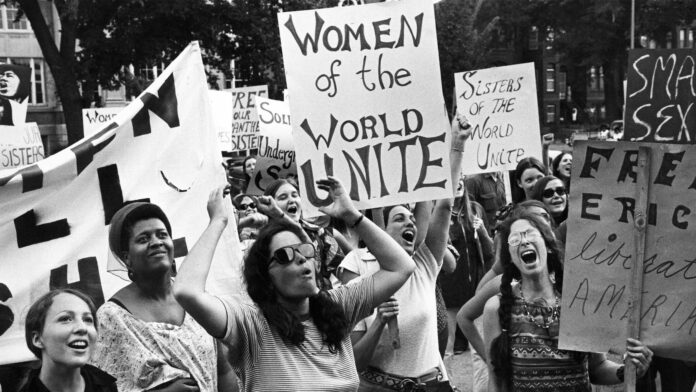Feminism, a multifaceted movement advocating for women’s rights and gender equality, often contends with a myriad of misconceptions and negative perceptions in contemporary discourse. In the United States, the refrain “feminism has gotten a bad name” echoes through social, political, and cultural corridors, prompting inquiry into the origins and ramifications of this sentiment. Unpacking this phenomenon involves an exploration of societal attitudes, media representation, and the intersectionality of the feminist movement itself. The perception of feminism as adversarial or extremist rather than a conduit for social equity raises pertinent questions about the framework through which gender issues are understood.
The Historical Context of Feminism’s Evolution
To understand why feminism in the United States has garnered a tarnished reputation, one must first contextualize its historical evolution. The movement is not monolithic; it has undergone various phases, each characterized by distinct objectives and ideologies. The first wave of feminism, spanning the late 19th and early 20th centuries, primarily focused on suffrage and legal equity. Figures such as Susan B. Anthony and Elizabeth Cady Stanton championed the right to vote for women, a struggle that ultimately culminated in the ratification of the 19th Amendment in 1920.
In contrast, the second wave, emerging during the 1960s and 1970s, expanded the dialogue to encompass a broader spectrum of issues, including reproductive rights, workplace discrimination, and sexual liberation. This era saw the emergence of influential feminists like Betty Friedan and Gloria Steinem, who articulated the frustrations of women confined to traditional roles. Nonetheless, this wave also witnessed the dawn of critiques that would shape the contemporary image of feminism.
The third wave, which began in the 1990s, emphasized individualism and diversity, acknowledging the varied experiences of women across race, class, and sexual orientation. Despite its progressive ideals, this phase has struggled against entrenched stereotypes that often caricature feminism as radical or anti-male. Such misunderstandings are exacerbated by the actions of a few, overshadowing the contributions of many who advocate for equity and justice.
Dissecting Media Narratives and Representation
Media representation plays a pivotal role in shaping public perception, often reducing complex movements like feminism to simplistic tropes. The portrayal of feminists in mainstream media ranges from the empowering to the pejorative, frequently reflecting societal biases rather than the true essence of the movement. This dichotomy contributes significantly to the notion that feminism has a “bad name.”
Reality television, online platforms, and even traditional news outlets can amplify certain narratives that depict feminists as hostile or excessively militant. For example, the term “feminazi,” a derogatory portmanteau, encapsulates the perception of feminists as aggressive adversaries rather than allies for social justice. Such framing detracts from the foundational principles of feminism, which advocate for emancipation and equality.
Moreover, the focus on sensationalism over substantive issues often leads to a lack of meaningful discourse regarding the legitimate grievances feminists seek to address. Issues such as pay inequality, reproductive rights, and domestic violence are obfuscated by a culture that favors viral content over comprehensive understanding. The resultant mischaracterization fosters hostility toward the movement, as individuals disengage from substantive discussions, opting instead for caricatures that deride rather than enlighten.
The Nuances of Intersectionality and Feminism
Intersectionality, a term coined by Kimberlé Crenshaw, elucidates how various social identities—such as race, class, gender, and sexual orientation—interact, influencing individuals’ experiences and systemic oppression. While intersectionality has enriched feminist discourse by fostering inclusivity, it has also prompted backlash from those who perceive it as a dilution of the movement’s core objectives.
Such divisive perceptions often manifest in criticisms that claim feminism prioritizes the experiences of white, middle-class women, thereby marginalizing women of color and those from socioeconomically disadvantaged backgrounds. This critique, while valid in highlighting the need for more inclusive representation within feminist circles, has been misconstrued by some as an indictment of feminism as a whole.
Furthermore, the tensions arising from the call for inclusivity may reinforce negative stereotypes about feminists being divisive or overly concerned with identity politics. In reality, the commitment to intersectionality is fundamental for a holistic understanding of feminism, advocating for the rights of all women, particularly those who cannot easily access the benefits of mainstream feminism.
Engagement Strategies: Reformulating the Feminist Narrative
To ameliorate the fraught image of feminism in the United States, it is imperative to consider strategies for reformulating its narrative. Enhancing media literacy and fostering critical engagement with feminist issues can empower individuals to challenge reductive stereotypes and gain a nuanced understanding of feminist ideals. This requires a concerted effort to mobilize media platforms to amplify diverse voices within feminism, illustrating that the movement is as varied as the women it seeks to represent.
Educational institutions have a crucial role in dismantling misconceptions by integrating feminist theory into curricula across disciplines. By cultivating discussions about gender equity in schools and universities, students can be encouraged to critically engage with feminist principles, thereby fostering an environment wherein feminist activism is viewed as a legitimate and necessary pursuit.
Additionally, intergenerational dialogues between feminists of various waves can bridge gaps in understanding and foster solidarity. By sharing personal experiences and acknowledging the challenges faced over the decades, feminists can compile a collective narrative that underscores resilience and communal effort rather than oppositional rhetoric.
The Path Forward: Reclaiming Feminism’s Narrative
In navigating the complexities of public perception, feminists must strive to reclaim and redefine the movement’s narrative. The onus lies in fostering an ethos of inclusivity and empathy, ensuring that feminist dialogue remains open, varied, and representative of all women’s experiences. Amplifying the voices of marginalized individuals within the movement will not only enrich feminist discourse but also challenge prevailing stereotypes that paint feminism as a monolithic and unapproachable ideology.
Ultimately, the charge is clear: dismantling the adverse perceptions that have beset feminism is no small feat, but with deliberate concerted efforts and a steadfast commitment to gender equity, feminism can transcend its misrepresented identity. The aim is not merely to rehabilitate a tarnished reputation but to invigorate a movement that fundamentally seeks justice and equality for all.





























